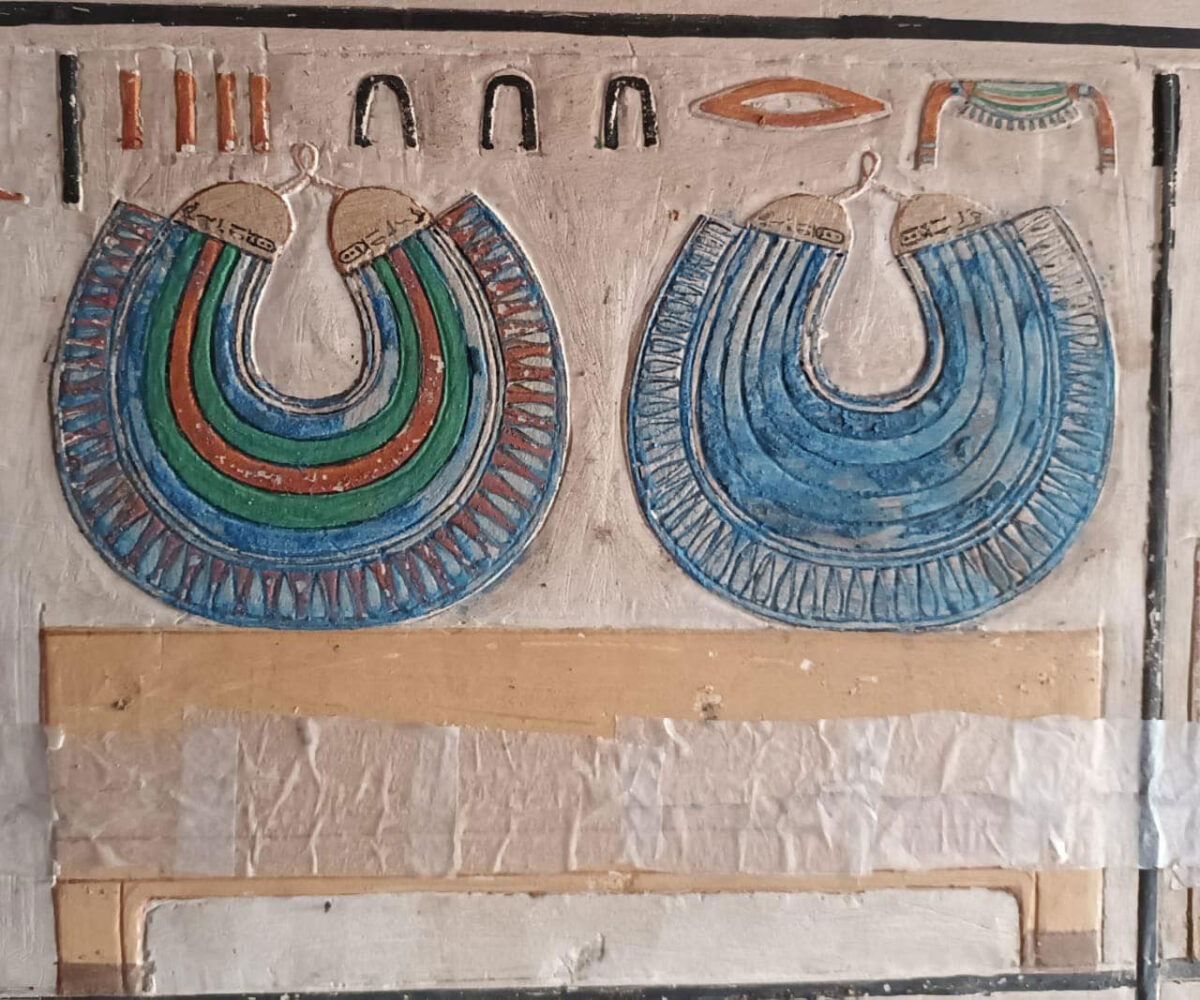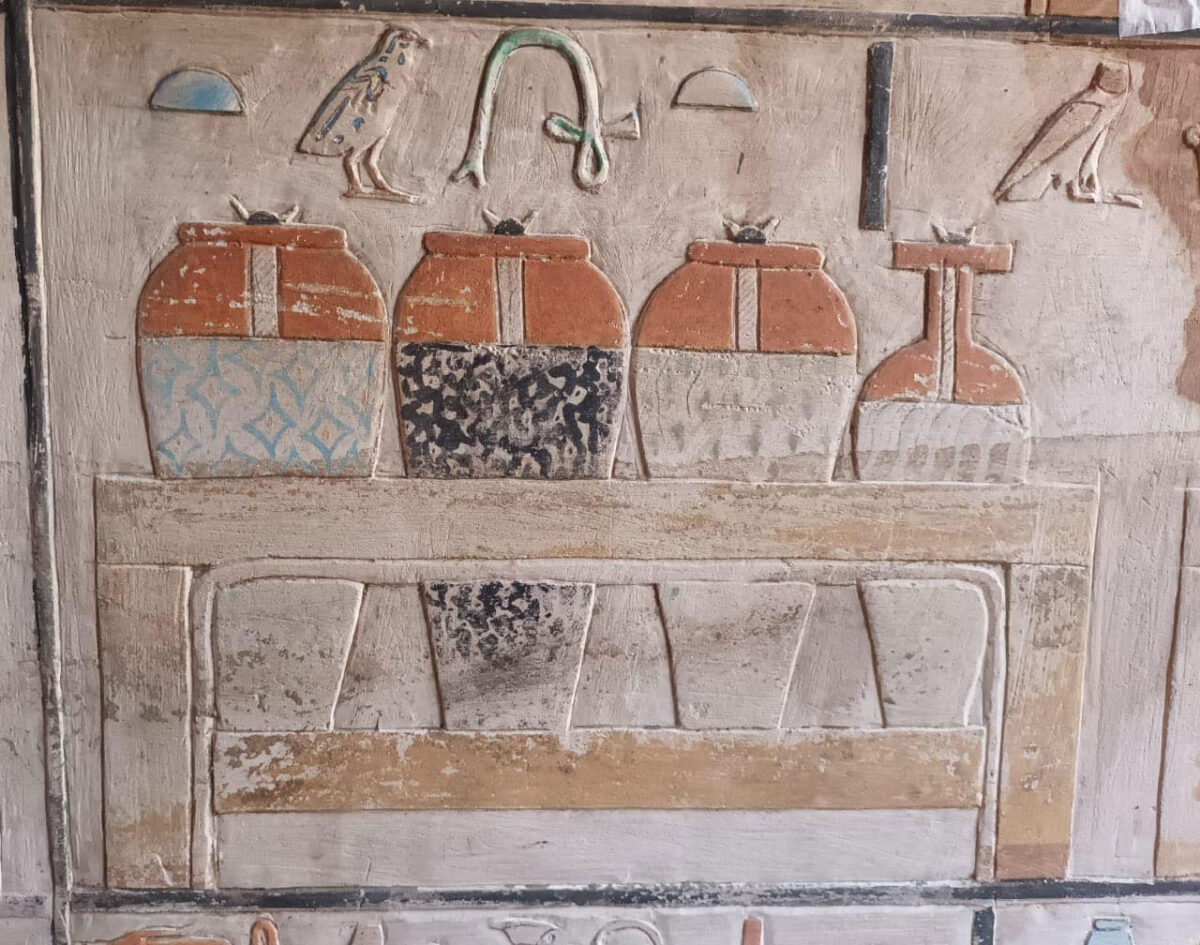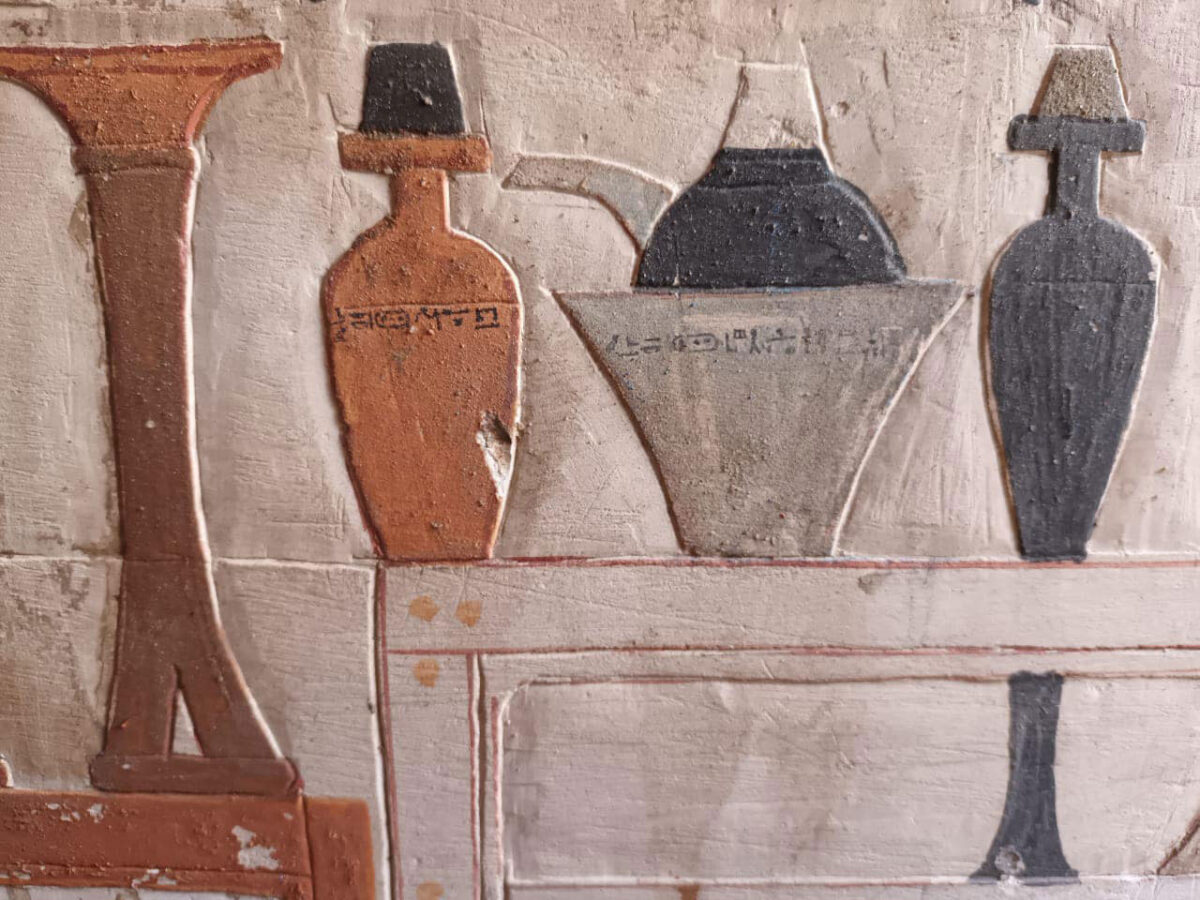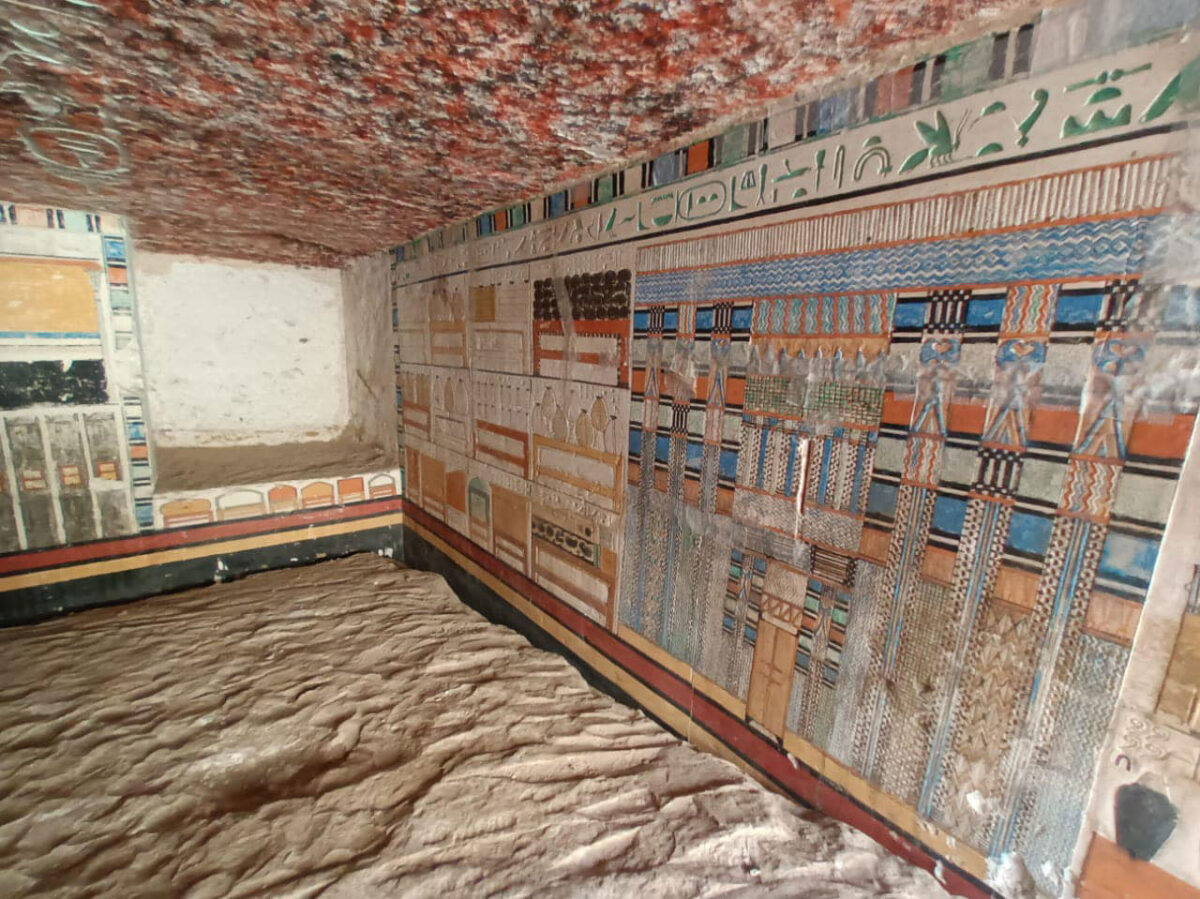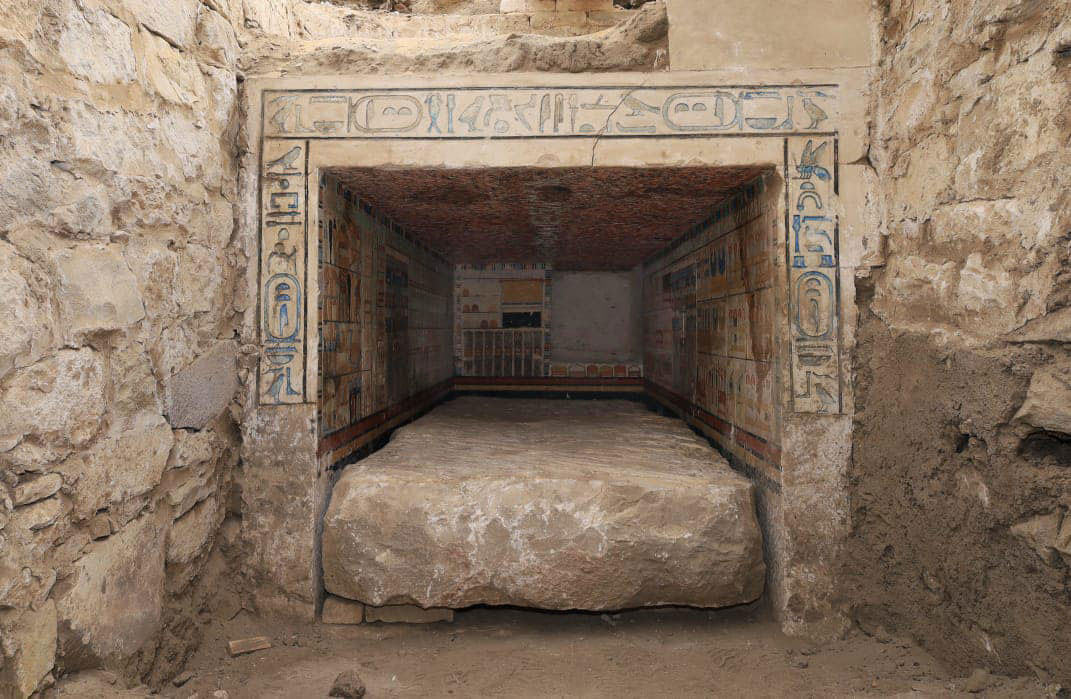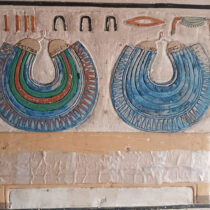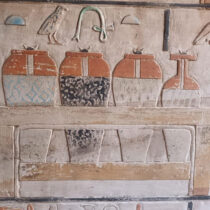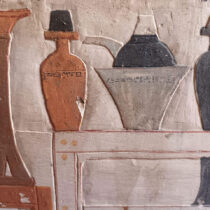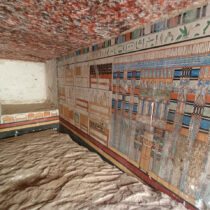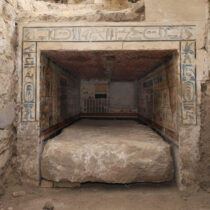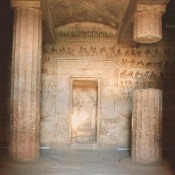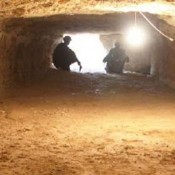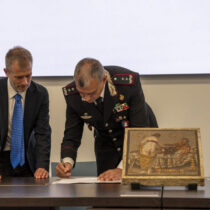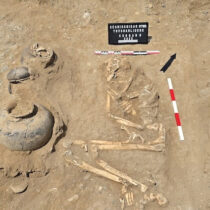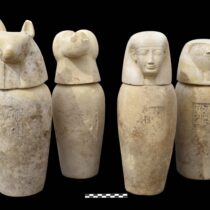The tomb of a physician who served Old Kingdom Pharaoh Pepi II has been brought to light in Saqqara by a joint French-Swiss archaeological mission headed by Dr. Philippe Colomber.
The mission has uncovered the tomb in the southern part of the vast necropolis of Saqqara. The newly found tomb, in the type of a mastaba, is adorned with stunning carvings and vibrant artwork, including a beautifully painted false door, depictions of funerary offerings and a beautifully painted ceiling that imitates the shape of granite stones.
The team also discovered a stone sarcophagus. Inscriptions on the ceiling and false door as well as the sarcophagus record the name of the deceased as Teti Neb Fu, and identify him as Chief Palace Physician, Priest and “Magician” of the Goddess Serket (expert in venomous bites), Chief Dentist and Director of Medicinal Plants. Despite evidence of ancient looting, the tomb’s walls remain intact, offering a rare glimpse into daily life and cultural practices during the Old Kingdom.
The French-Swiss team is active in a specific part of Saqqara necropolis likely reserved for state officials serving the 6th Dynasty Pharaoh Pepi I, and his royal wives. Since 2022 the team is credited with significant discoveries such as the mastaba of Vizier Weni, a man known via a long autobiographical text carved on another funerary monument commissioned for him at Sohag.
The necropolis of Saqqara is famously home to the oldest known pyramid (3rd Dynasty), the earliest copy of the Pyramid Texts (5th Dynasty) a vast Serapeum, and the only known mummification workshop. Still, archaeological missions working in Saqqara keep bringing to light extraordinary finds. Only three days ago, an Egyptian-Japanese mission led Mohamed Abdel-Badie (SCA) and Nozomu Kawai (Kanazawa University) announced the discovery of an impressive group of tombs dating to the 3rd and the 18th Dynasty at Saqqara’s eastern slope. The almost contemporary discovery of the physician’s tomb in another part of the necropolis adds to Saqqara’s rich legacy as one of Egypt’s most significant archaeological sites.
